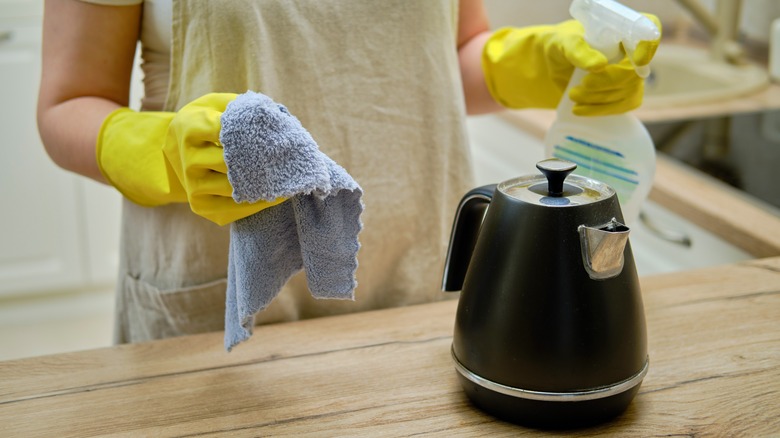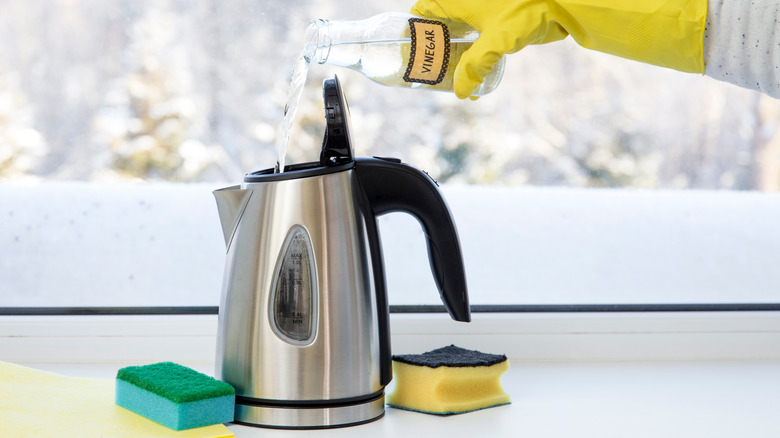How To Deep Clean Your Teapot With A Little Bit Of Chemistry
On the surface, there aren't many recipes more basic than a cup of tea. All you need to start sipping is a few loose leaves and some hot water. Despite its unassuming nature, in a number of different cultures, tea plays a critical role in cuisine. In 2020 alone, more than $207 billion worth of tea was sold around the world, as outlined by Statista.
Everyone has their own unique set of customs surrounding tea time, which range from ornate ceremonies to simple setups. For example, a classic high tea isn't actually as fancy as you'd think. Rather, it's like an after-work siesta featuring substantial snacks. In a comparable cultural context, where tea is an everyday, or even multiple times a day affair, a certain amount of upkeep is going to come with the territory. If you want to ensure that your well-worn pot is primed to tomorrow's tea, you're going to need to give it a thorough, scientific scrub.
Tea tannins and a scrubbing solution
Some of the key contributors to the taste of your tea are polyphenols, which are plant compounds. One particular branch of polyphenols, tannins, give depth to your tea's body. You may be familiar with tannins as the compound that gives certain wines their dry bitterness. While tannins are imperative to flavor, they have the unfortunate side effect of ruining your favorite pot by scarring its sides with unscrubbable stains.
If you want to rid your teapot of this tannic residue, you're going to need to go beyond basic cleaning techniques, and think like a scientist. Tea is naturally acidic. Depending on the type, it can fall anywhere from 5.5 to a 2 on the pH scale. If you're familiar with rudimentary chemistry, you know that an acid neutralizes a base. Often, this results in a volatile chemical reaction — you're probably familiar with the classic childhood baking soda volcano experiment. Baking soda isn't just useful for recreating natural disasters, though. It is also the perfect tool for cleaning your stained teapot.
Give new life to your stained teapot with baking soda
If you want to clean with baking soda, all you need to do is mix a bit of the powder into water and smear the resulting spread on any tea-stained surface. Then, it's just a matter of sitting back and letting chemistry run its course. After about 20 minutes, you can take a sponge and scape off the baking soda solution. In all likelihood, a gleaning teapot interior will be staring back at you. Essentially, the basic baking soda solution combats the tricky tannin stains by neutralizing their acidity.
Sometimes, tea stains can prove to be too much for baking soda alone to solve. While baking soda will react with the acid in the tea residue, you can add a little extra oomph to the chemical equation by tossing in an additional source of acid, like vinegar or lemon juice. This can cause a powerful reaction, wherein a bubbling bath of carbon dioxide will forcefully strip residue from your teapot.


